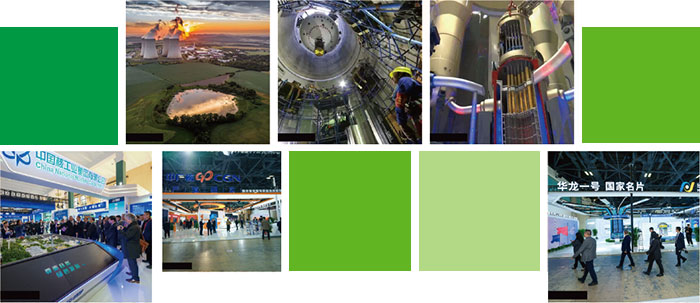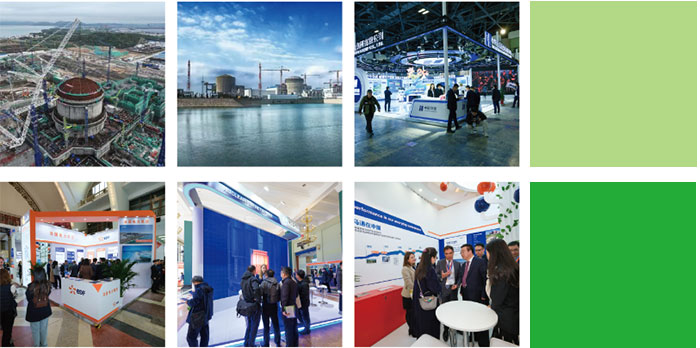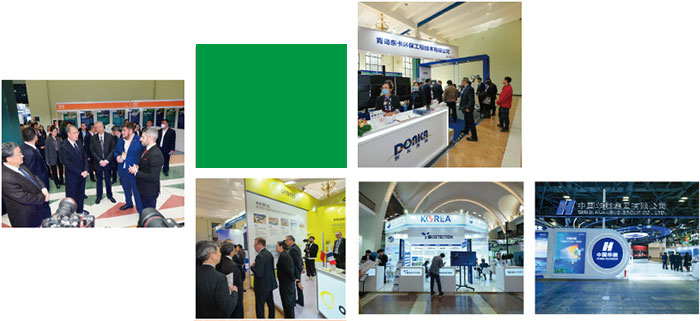ORGANIZERS
CO-ORGANIZER
With the support of
The Chinese nuclear power market
At present, the global energy pattern is undergoing profound changes, and nuclear energy, as a low-carbon and efficient energy, is playing an increasingly critical role in the process of global energy transformation. As a major energy consumer, China's nuclear energy industry has developed rapidly on the road of promoting energy structure optimization and green and low-carbon development, and has become an important force in the global nuclear energy field. It has shown a dynamic development
Installed Capacity
- According to the existing project construction cycle, by 2025, the installed capacity of nuclear power in China is expected to reach about 70 million kilowatts. In 2024, there were 57 operating nuclear power units in China, with an installed capacity of 59.4317 million kilowatts. The installed capacity of operating nuclear power is expected to reach about 65 million kilowatts in 2025.
Construction Projects
In 2024, 11 nuclear power units were newly approved, the largest number of approvals in history. In 2025, a number of coastal nuclear power projects with mature conditions will be approved and started, and the construction of nuclear power projects under construction will be steadily promoted. There are multiple projects under construction or planned to start, involving six provinces including Shandong, Zhejiang, Liaoning, Guangdong, Guangxi, and Fujian, with an installed capacity of over 27 million kilowatts.
Technological Development
The third-generation nuclear power technology of "Hualong One" has been applied on a large scale. Each single unit can generate more than 10 billion kilowatt-hours of electricity annually, reducing carbon emissions by 8.16 million tons, and it has strong international competitiveness. China has made breakthrough progress in the field of small modular reactors (SMR). At the end of 2024, at the Changjiang Nuclear Power Base in Hainan, the grid connection of the main power supply of the world's first onshore commercial small reactor "Linglong One" was completed.
Policy Environment
The National Energy Administration issued the "Guiding Opinions on Energy Work in 2025", clarifying the three core objectives of energy supply security, green and low-carbon transformation, and development quality and efficiency. The positioning of nuclear power as a low-carbon base load power source has been further highlighted. Local governments are enthusiastic about promoting the development of nuclear power. Cities and provinces such as Shanghai, Shandong, and Fujian regard nuclear power as a new engine to promote economic transformation and green development.
Market Prospects
Installed capacity growth: It is expected that by 2030, China's nuclear power in operation installed capacity is expected to reach 120 million kilowatts, power generation may jump to the world's first. With the successive production of a series of projects under construction, as well as continued project approval and construction in the future, the installed scale of nuclear power will maintain a stable growth trend, and the proportion of the national installed power will gradually increase.
Expansion of market scale: The nuclear energy industry chain continues to extend, in addition to the field of power generation, the application of heating, hydrogen production, seawater desalination and other fields is gradually launched, which will drive the development of related industries and further expand the scale of the nuclear energy market. According to the forecast of China Nuclear Energy Industry Association, by 2025, China's nuclear technology application output value can reach trillion market scale, of which industrial application output value accounts for more than 50%, medical nuclear technology output value accounts for about 20%, and industrial development prospects are broad.


中國核電市場
目前全球能源格局正經(jīng)歷深刻變革,核能作為一種低碳、高效的能源,在全球能源轉(zhuǎn)型進(jìn)程中扮演著愈發(fā)關(guān)鍵的角色。中國作為能源消費(fèi)大國,在推動(dòng)能源結(jié)構(gòu)優(yōu)化和綠色低碳發(fā)展的道路上,核能產(chǎn)業(yè)發(fā)展迅猛,已成為全球核能領(lǐng)域的重要力量。呈現(xiàn)出蓬勃發(fā)展的態(tài)勢
裝機(jī)容量
- 按照現(xiàn)有項(xiàng)目建設(shè)周期,到2025年,中國核電裝機(jī)容量預(yù)計(jì)將達(dá)到7000萬千瓦左右。2024年全國運(yùn)行核電機(jī)組57臺,裝機(jī)容量5943.17萬千瓦,2025年在運(yùn)核電裝機(jī)預(yù)計(jì)達(dá)到6500萬千瓦左右。
建設(shè)項(xiàng)目
- 2024年新核準(zhǔn)11臺核電機(jī)組,為歷年核準(zhǔn)數(shù)量之最。2025年將核準(zhǔn)開工一批條件成熟的沿海核電項(xiàng)目,穩(wěn)步推進(jìn)在建核電工程建設(shè)。多個(gè)項(xiàng)目在建或擬開工,涉及魯、浙、遼、粵、桂、閩6省,裝機(jī)容量超2700萬千瓦。
技術(shù)發(fā)展
- “華龍一號”三代核電技術(shù)已規(guī)模化應(yīng)用,單臺機(jī)組年發(fā)電超100億度,可減少碳排放816萬噸,擁有很強(qiáng)國際競爭力。我國在小型模塊化反應(yīng)堆(SMR)領(lǐng)域取得突破性進(jìn)展,2024年末在海南昌江核電基地,完成全球首個(gè)陸上商用小堆“玲龍一號”主電源倒送電工作。
政策環(huán)境
- 國家能源局印發(fā)《2025年能源工作指導(dǎo)意見》,明確能源供應(yīng)保障、綠色低碳轉(zhuǎn)型與發(fā)展質(zhì)量效益三大核心目標(biāo),核電作為低碳基荷電源的定位進(jìn)一步凸顯。地方政府推動(dòng)核電發(fā)展熱情高漲,上海、山東、福建等地將核電作為推動(dòng)經(jīng)濟(jì)轉(zhuǎn)型、綠色發(fā)展的新引擎。
市場前景
裝機(jī)規(guī)模增長:預(yù)計(jì)到2030年,中國核電在運(yùn)裝機(jī)容量有望達(dá)到1.2億千瓦,發(fā)電量可能躍居世界首位。隨著一系列在建項(xiàng)目的陸續(xù)投產(chǎn),以及未來持續(xù)的項(xiàng)目核準(zhǔn)與建設(shè),核電裝機(jī)規(guī)模將保持穩(wěn)定增長態(tài)勢,在全國電力裝機(jī)中的占比也將逐步提升。
市場規(guī)模擴(kuò)大:核能產(chǎn)業(yè)鏈不斷延伸,除發(fā)電領(lǐng)域外,在供熱、制氫、海水淡化等領(lǐng)域的應(yīng)用逐步展開,將帶動(dòng)相關(guān)產(chǎn)業(yè)發(fā)展,進(jìn)一步擴(kuò)大核能市場規(guī)模。根據(jù)中國核能行業(yè)協(xié)會預(yù)測,到2025年,我國核技術(shù)應(yīng)用產(chǎn)值可達(dá)萬億市場規(guī)模,其中工業(yè)應(yīng)用產(chǎn)值占比超過50%,醫(yī)用核技術(shù)產(chǎn)值占比約20% ,產(chǎn)業(yè)發(fā)展前景廣闊。
















 京公網(wǎng)安備 11010102005671號
京公網(wǎng)安備 11010102005671號